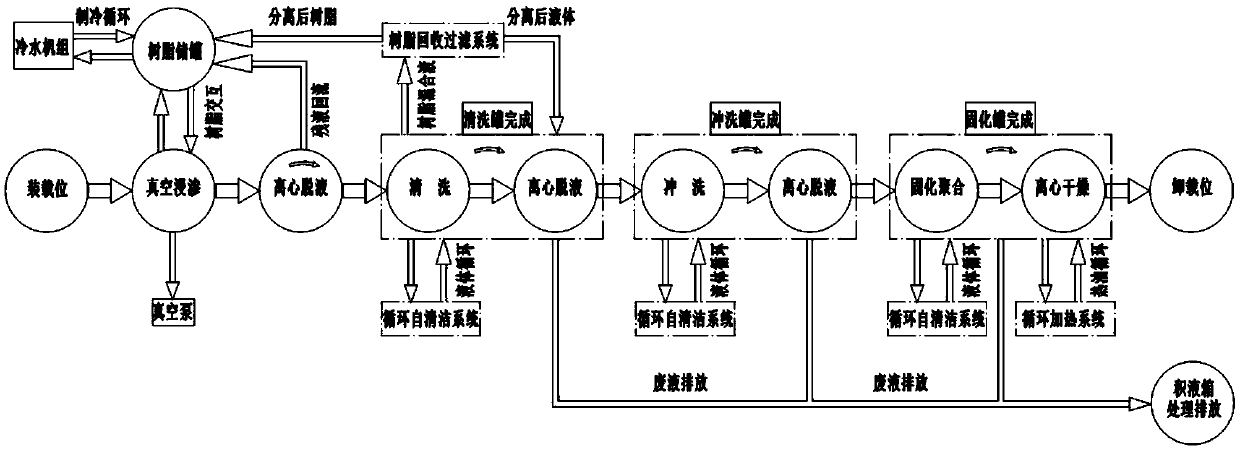Environment-friendly energy-saving infiltration process
An environmentally friendly, energy-saving and impregnating technology, applied in coatings, devices for coating liquids on surfaces, etc., can solve the problems of secondary pollution of products, mutual contamination of liquids, and low utilization rate of sealants and lotion solutions. Achieve the effect of saving handling time and energy consumption, avoiding chemical solvent pollution, and simplifying the hot air drying process
- Summary
- Abstract
- Description
- Claims
- Application Information
AI Technical Summary
Problems solved by technology
Method used
Image
Examples
Embodiment
[0031] An environment-friendly and energy-saving impregnation process, comprising the steps of:
[0032] a. Vacuum impregnation of the workpiece;
[0033] b. Centrifuge the workpiece after vacuum impregnation;
[0034] c. Clean the workpiece after centrifugal dehydration and then centrifugal dehydration again;
[0035] d. After washing the workpiece after centrifugation and dehydration again, the third centrifugation and dehydration;
[0036] e, solidify and polymerize the workpiece after the third centrifugal dehydration;
[0037] f. After the solidification and polymerization of the workpiece is completed, lift it above the liquid level for centrifugal dehydration.
[0038] Specifically, in step c, the liquid after cleaning and centrifugal dehydration is filtered and separated, the separated sealant is recovered, and the separated liquid is self-recycled; at the same time, the cleaning liquid is self-cleaned and recycled.
[0039] Specifically, in step d, the cleaning li...
PUM
 Login to View More
Login to View More Abstract
Description
Claims
Application Information
 Login to View More
Login to View More - R&D
- Intellectual Property
- Life Sciences
- Materials
- Tech Scout
- Unparalleled Data Quality
- Higher Quality Content
- 60% Fewer Hallucinations
Browse by: Latest US Patents, China's latest patents, Technical Efficacy Thesaurus, Application Domain, Technology Topic, Popular Technical Reports.
© 2025 PatSnap. All rights reserved.Legal|Privacy policy|Modern Slavery Act Transparency Statement|Sitemap|About US| Contact US: help@patsnap.com


